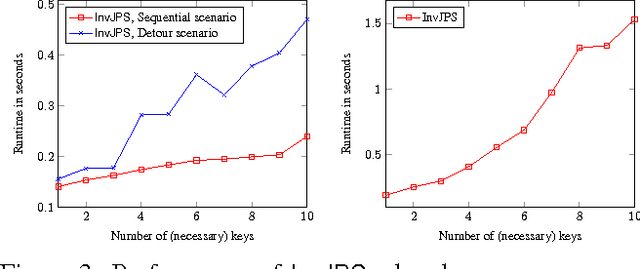Davide Aversa
Path planning with Inventory-driven Jump-Point-Search
Jul 04, 2016


Abstract:In many navigational domains the traversability of cells is conditioned on the path taken. This is often the case in video-games, in which a character may need to acquire a certain object (i.e., a key or a flying suit) to be able to traverse specific locations (e.g., doors or high walls). In order for non-player characters to handle such scenarios we present invJPS, an "inventory-driven" pathfinding approach based on the highly successful grid-based Jump-Point-Search (JPS) algorithm. We show, formally and experimentally, that the invJPS preserves JPS's optimality guarantees and its symmetry breaking advantages in inventory-based variants of game maps.
Action-based Character AI in Video-games with CogBots Architecture: A Preliminary Report
Jul 11, 2013Abstract:In this paper we propose an architecture for specifying the interaction of non-player characters (NPCs) in the game-world in a way that abstracts common tasks in four main conceptual components, namely perception, deliberation, control, action. We argue that this architecture, inspired by AI research on autonomous agents and robots, can offer a number of benefits in the form of abstraction, modularity, re-usability and higher degrees of personalization for the behavior of each NPC. We also show how this architecture can be used to tackle a simple scenario related to the navigation of NPCs under incomplete information about the obstacles that may obstruct the various way-points in the game, in a simple and effective way.
 Add to Chrome
Add to Chrome Add to Firefox
Add to Firefox Add to Edge
Add to Edge